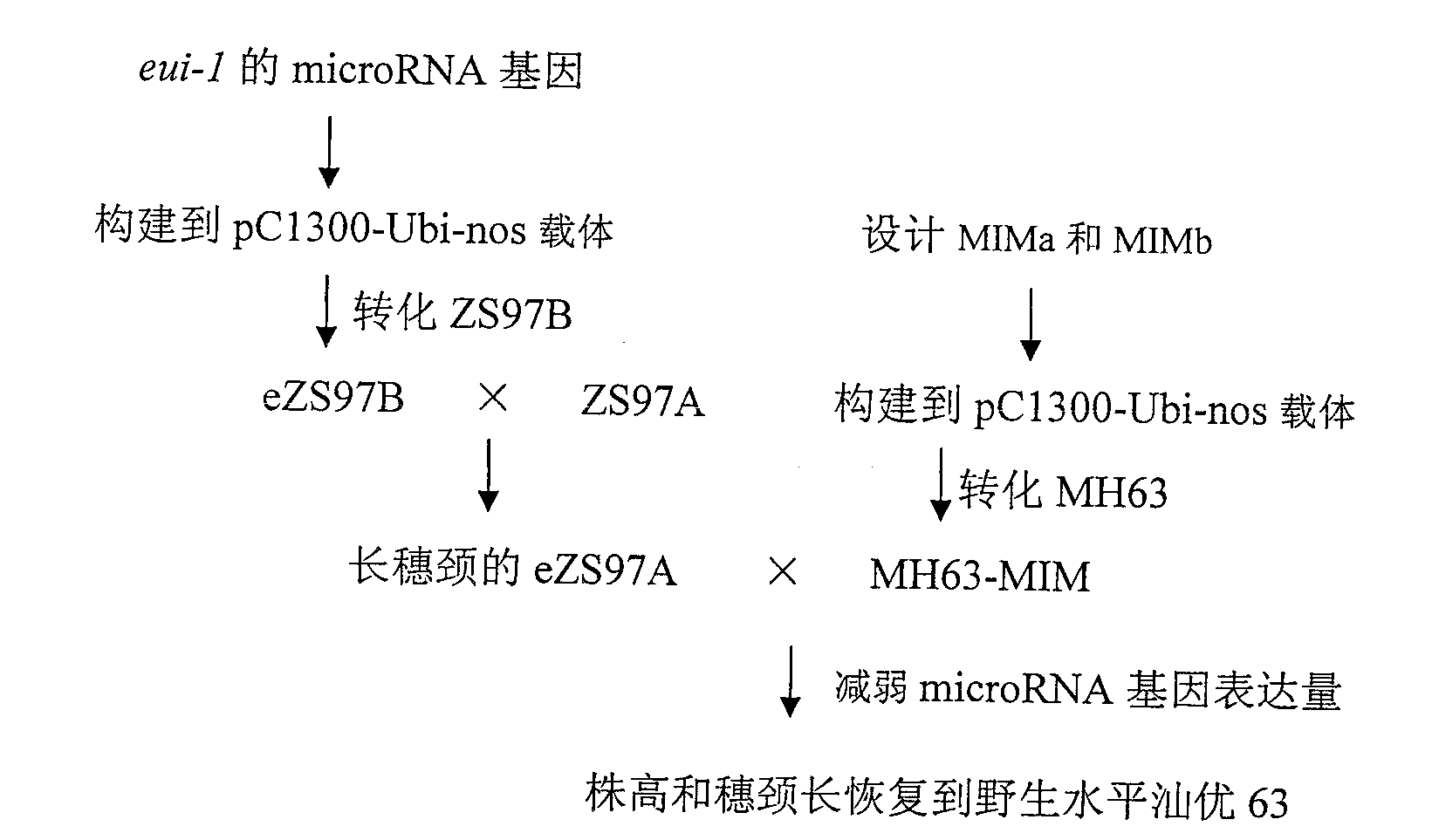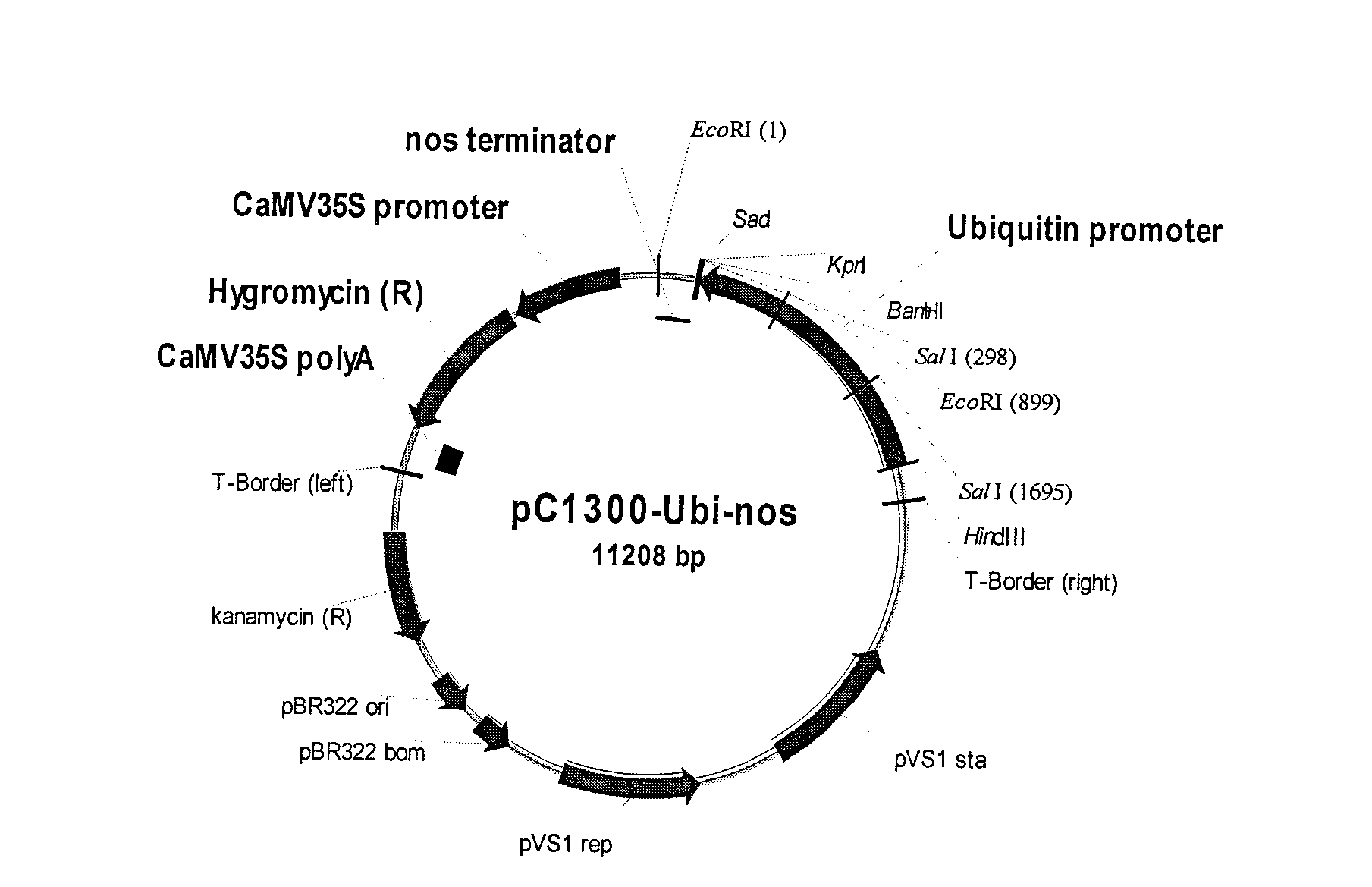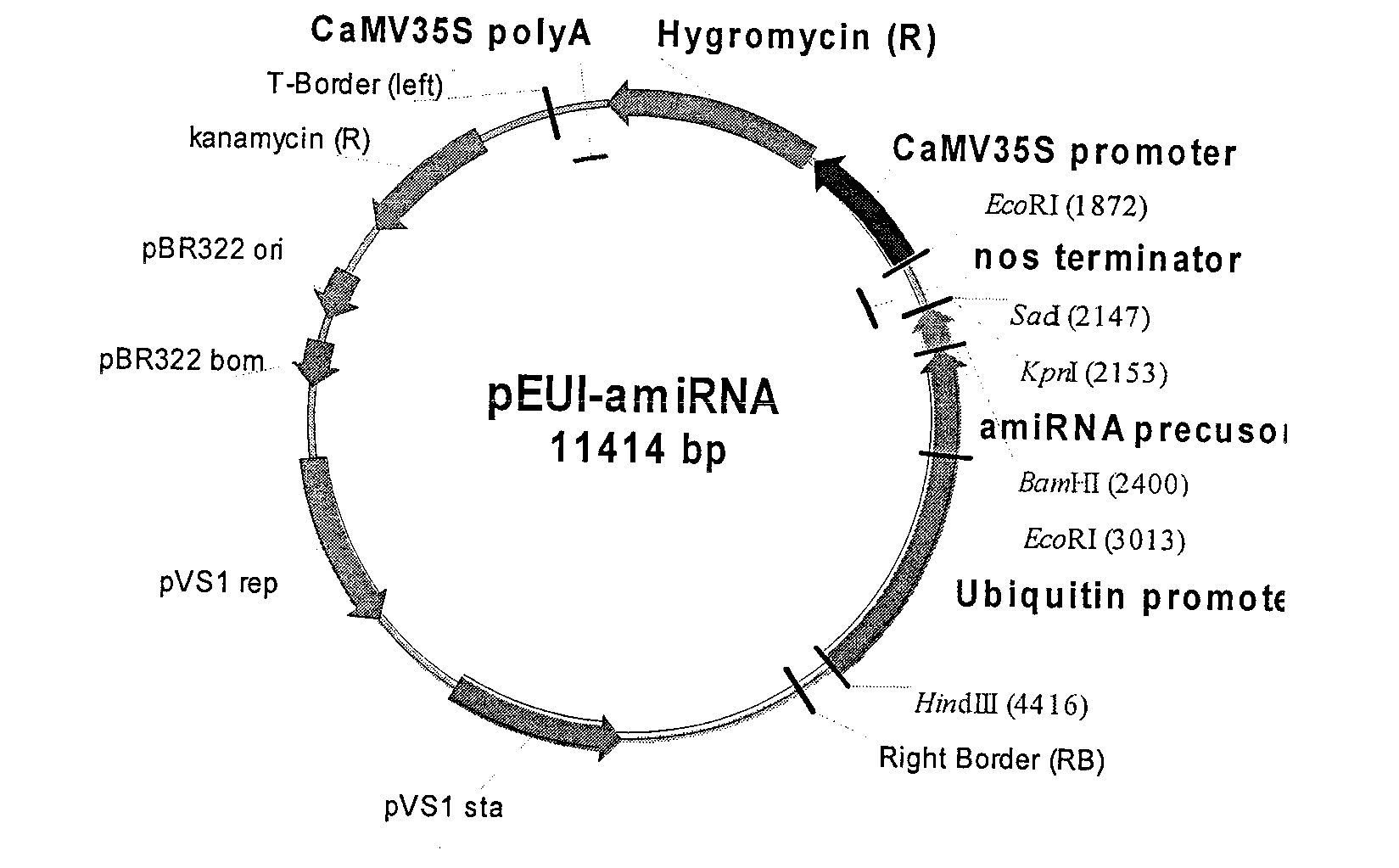Gene for controlling plant height and neck length of spike of rice and application
A gene and rice technology, applied in the field of plant genetic engineering, can solve the problems of increasing the cost of rice seed production, affecting the quality of seed production, and affecting the effect, and achieve the effects of improving panicle neck length, improving seed quality, and protecting the environment
- Summary
- Abstract
- Description
- Claims
- Application Information
AI Technical Summary
Problems solved by technology
Method used
Image
Examples
Embodiment 1
[0053] Example 1 Construction of amiRNA expression vector
[0054] Warthmann et al. (2008) reported that the use of maize Ubiquitin promoter to constitutively express a specific amiRNA sequence (TTGAGAACTATGCACGGGCGC) can specifically inhibit the expression of the rice Eui1 gene (Os05g40384), and improve the internodes of rice, especially the top node. significantly increased the plant height and panicle neck length of rice. In the present invention, we used the plasmid pNW55 (provided by Professor Detlef Weigel of the Max Planck Institute for Biological Development in Germany) as a template to obtain the Eui1 gene in rice according to the overlap extension PCR (overlap extension PCR) method described by Warthmann et al. (2008). The amiRNA precursor gene (named eui-amiRNA) was cloned into the T vector pGEM-T (Promega, USA), and then verified by sequencing. The amiRNA precursor gene was excised from the T vector with restriction endonucleases BamH I and Kpn I, and cloned into ...
Embodiment 2
[0057] Embodiment 2 Construction of artificial target mimic expression vector
[0058] Plasmid MT375 (provided by Professor Detlef Weigel of the Max Planck Institute for Biological Development in Germany) carries the rice natural target mimic gene OsIPS1 (GenBank: AY568759.1) ( Figure 4 ), the mRNA transcribed by OsIPS1 has a 24nt sequence complementary to rice miRNA osa-MIR399 as a template. The overlap extension PCR method (Franco-Zorrilla, et al.2007) was used to replace the sequence complementary to osa-MIR399 on the natural OsIPS1 with the sequence complementary to eui-amiRNA to form an artificial target mimic gene (see sequence table SEQ ID NO: 3 and SEQ ID NO: 5). The design of the Target mimic gene refers to the mechanism of action of the target mimicry found in plants by Franco-Zorrilla et al. (2007). We designed two target mimic genes (respectively named MIMa (see SEQ ID NO: 3 in the sequence listing) and MIMb (see SEQ ID NO: 5 in the sequence listing)) with sligh...
Embodiment 3
[0064] The genetic transformation of embodiment 3 rice
[0065] Since the rice sterile line could not receive the transgenic seeds, the expression vector pEUI-amiRNA was first transformed into the rice maintainer line ZS97B through the Agrobacterium-mediated genetic transformation method to obtain the transgenic rice family eZS97B. Then, the eui-amiRNA in eZS97B was introduced into the corresponding sterile line ZS97A by hybridization to obtain the transgenic sterile line eZS97A (the deposit number of China Center for Type Culture Collection is CCTCC NO P201111). The pC1300-MIMa and pC1300-MIMb were introduced into the rice restorer line Minghui 63 (MH63) by the Agrobacterium-mediated method, and the transgenic material obtained was named MH63-MIMb (the deposit number of the China Center for Type Culture Collection is CCTCC NO P201113) . For the transgenic method, refer to Lin and Zhang (2005).
[0066] The steps of Agrobacterium-mediated genetic transformation are as follow...
PUM
 Login to View More
Login to View More Abstract
Description
Claims
Application Information
 Login to View More
Login to View More - R&D
- Intellectual Property
- Life Sciences
- Materials
- Tech Scout
- Unparalleled Data Quality
- Higher Quality Content
- 60% Fewer Hallucinations
Browse by: Latest US Patents, China's latest patents, Technical Efficacy Thesaurus, Application Domain, Technology Topic, Popular Technical Reports.
© 2025 PatSnap. All rights reserved.Legal|Privacy policy|Modern Slavery Act Transparency Statement|Sitemap|About US| Contact US: help@patsnap.com



